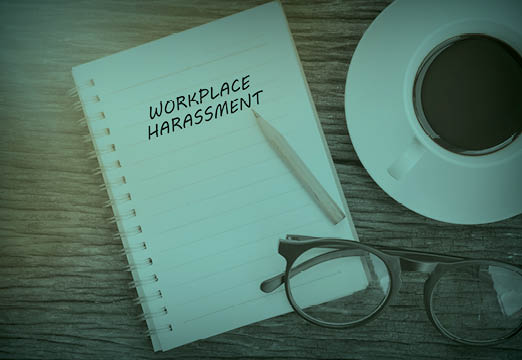We discuss preparedness all the time lately – preparing for working remotely, employees returning to the office, etc. We also talk about masks, gloves, or hand sanitizers, but are you prepared to handle workplace harassment and discrimination issues? 8 in 10 companies deal with workplace harassment and discrimination issues every year.
Sadly, most companies aren’t effectively equipped to deal with the issues or the repercussions of mismanaging incidents, particularly as we’re starting to see the impact of COVID-19 on our economy and workplaces.
COVID-19 has brought many challenges and obstacles to our doorstep, and the battle to regain some sense of normalcy will likely be an ongoing exercise. While most employers are developing their return-to-workplace strategies, there are areas of risk hiding in the shadows, and they were around long before this pandemic stole our attention.
Problems with the Current Workplace Harassment and Discrimination System
The current standard protocol for dealing with workplace harassment and discrimination today is one or more of the following — employee training, anonymous hotlines and safe reporting platforms, “open-door” policies, and “no tolerance” policies.
The problems with these measures are three-fold:
- Even with hotlines and safe reporting platforms in place, incident reports are still sent to internal HR departments or managers to investigate and resolve. This means employees often don’t report incidents, because they’re afraid of retaliation. In fact, 75 percent of employees don’t report incidents for this very reason. When incidents aren’t reported, workplace harassment continues and culture, productivity, and profitability suffer.
- Most internal HR departments and managers aren’t equipped to effectively deal with and manage workplace harassment and discrimination. They either don’t have the proper training and/or don’t have the bandwidth to manage the incidents. Just one mismanaged incident opens the door to legal risk and impacts a company’s profits, investor prospects, reputation, culture, and more.
- The Equal Employment Opportunity Commission (EEOC) says these measures aren’t enough to protect employees or mitigate risk for employers. This leaves companies at risk of investigations, bad press, and costly legal and settlement fees.
What’s at Stake?
Many companies don’t think they have a problem with workplace harassment and discrimination — until they do. Consider the following statistics:
- One in three employees has experienced harassment.
- Nearly 75 percent of employees don’t report harassment.
- One in five companies face a claim every year.
- The average cost to defend one claim is $125,000.
- In 2019, U.S. companies paid $68.2 million in harassment and discrimination claims through the EEOC — a 20 percent increase from the previous all-time high.
- In 2019, nearly 54 percent of all EEOC claims were due to retaliation — the highest percentage ever.
- Companies with the highest sexual harassment rates underperform the market by 9 percent.
Risk Protection for Companies and Employees
So, how can you fix these problems? The only way to provide companies and employees with real risk protection is for companies to manage workplace harassment and discrimination via an impartial third-party partner. And until recent years, there hasn’t been a solution available that allowed employers to do that.
At Holmes Murphy, one of our goals is to always be “Thinking Ahead” and with that bring cutting-edge resources for managing an employer’s benefit, health, and business risk. In the case of workplace harassment and discrimination, we have identified a best practice solution and program to mitigate legal risk for your company and protect and empower your employees.
Manage Workplace Harassment and Discrimination with Holmes Murphy’s Help
This unique program is a relatively new solution in the market, and it’s the only one of its kind. Here’s how it works:
- The program provides an independent, safe platform for employees to report incidents (online or by phone).
- The program’s specialized and certified legal professionals then impartially investigate each incident, working towards de-escalating potential problems — ultimately, providing resolution recommendations to the employer in about five business days.
Delivering this unique strategy means fewer, if any, EEOC claims get filed against companies. It also demonstrates good faith compliance with EEOC guidelines, minimizing exposure to punitive damages and creating a stronger, defensible position for companies.
And because this program uses an impartial third-party to manage workplace harassment, employees are no longer afraid of retaliation when reporting incidents — empowering employees and improving culture.
Why Does Workplace Harassment Matter Now?
As we approach a mid-to post-pandemic return-to-workplace scenario, employers are going to face even more challenges than before. Here are just a couple of examples:
Example 1
Most employee discrimination claims are made post-employment. In the case of COVID-19 terminations (layoffs and furloughs), employees may feel discriminated against if their benefits and/or employment was compromised in favor of another fellow employee. For that matter, which employees get rehired as businesses grow to full capacity could lead to potential discrimination claims.
Example 2
Some companies that were forced to lay off or furlough employees as a result of COVID-19 will face allegations of discrimination and retaliation under the new Families First Coronavirus Response Act (FFCRA) (one suit has already been filed).
Example 3
Some companies could face charges under the Americans with Disability Act (ADA) as workers are transitioning back to the workplace claiming “reasonable accommodations” were not met. For example: A worker has an underlying condition he says should allow him to continue to work from home while his fellow employees return to the office and, if the company doesn’t comply, he could have grounds for a lawsuit.
Companies should prepare now for what’s inevitably coming down the road. While it’s a touchy topic, it’s one that’s a necessity to talk about.
I know I’ve covered a lot, but would love to hear from you. How have you and your company addressed these potential blind spots for your workforce? What questions do you have for us? As always, please feel free to reach out to see how these programs could provide value to your business and employees!








